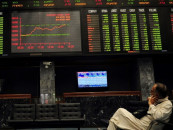With oil industry in crisis, hedge funds sense turning point
Collapse of business activity will continue to weigh heavily on oil prices for many months

Senior US government officials had been in contact with their Russian and Saudi counterparts to push for output cuts. PHOTO: FILE
Overall, hedge funds and other money managers were still net sellers of 19 million barrels of petroleum in the six most important futures and options contracts in the week ended on March 31.
But they initiated 40 million barrels of new purchases as well as 59 million barrels of fresh sales, according to position records published by ICE Futures Europe and the US Commodity Futures Trading Commission.
The number of new purchases was the highest since before Christmas and the first time any new long positions had been added on net since late January.
Portfolio managers added long positions mostly in crude with new longs initiated in Nymex and ICE WTI (+33 million barrels) and to a lesser extent Brent (+8 million).
With both WTI and Brent prices close to multi-decade lows, and wellhead prices in the oilfields of Texas even lower, close to their lowest levels for 40 years in real terms, prices began to look unsustainable.
Extreme high and low prices are dynamically unstable and never last for very long because they compel rapid and substantial adjustments in consumption and/or production.
Extreme high prices in 2008, 2011 and 2018, and extreme lows in 1986, 1998 and 2008, lasted briefly in each case, usually just a few weeks or a couple of months.
In this instance, extreme low prices have made most of the US shale industry loss-making, prompting pressure from the White House on Saudi Arabia and Russia to end their volume war.
The rapid accumulation of crude and fuel stocks along the supply chain threatens to overwhelm available storage capacity and bring production to a halt through a combination of ultra-low prices and capacity constraints.
By the end of last week, the White House had described the behaviour of Russia and Saudi Arabia as crazy and called on both countries to cut production or face retaliation including possible tariffs and other sanctions.
Senior US government officials had been in contact with their Russian and Saudi counterparts to push for output cuts while the administration was also meeting representatives of the US oil industry. By early last week, hedge funds’ bearish positions had started to become very stretched, with an unusually large concentration of short positions across the petroleum complex. The ratio of bullish long positions to bearish short ones had fallen close to its lowest at any time for the last six years.
Such lopsided positioning has usually preceded a sharp reversal in prices. And in the second half of last week, in the inevitable recoil, Brent prices surged more than $11 per barrel (50%) as US political pressure pushed Russia and Saudi Arabia towards talks to end their volume war. The collapse of business activity and transportation around the world as a result of the novel coronavirus and lockdowns will continue to weigh heavily on oil prices for many months.
But the industry appears to have reached crisis point last week, with overwhelming commercial and political pressure to reduce output rapidly to prevent storage becoming full and a collapse in prices towards zero.
Published in The Express Tribune, April 7th, 2020.
Like Business on Facebook, follow @TribuneBiz on Twitter to stay informed and join in the conversation.


















COMMENTS
Comments are moderated and generally will be posted if they are on-topic and not abusive.
For more information, please see our Comments FAQ